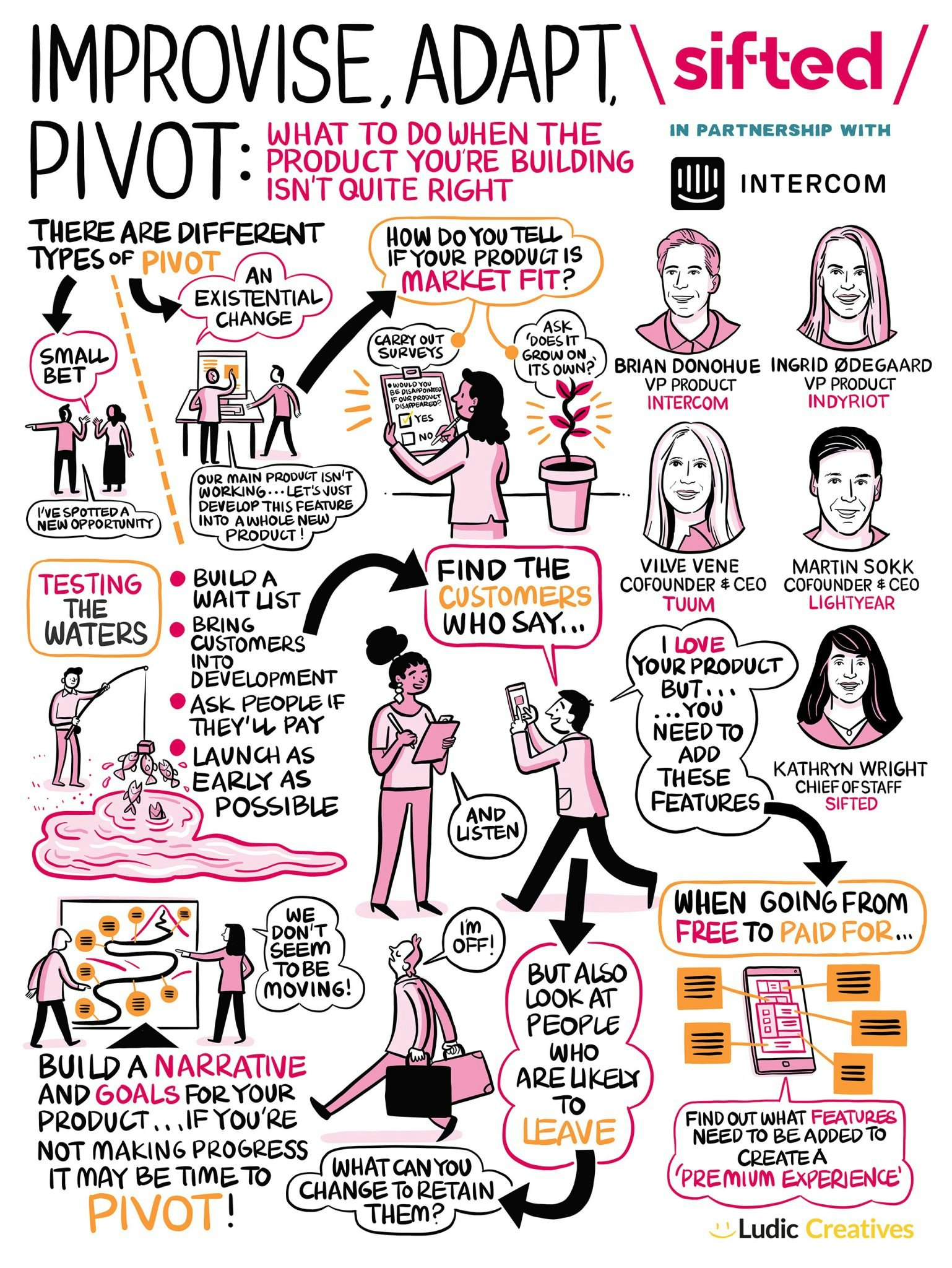Covid-19 forced many companies to rethink the way they did business, with many startups expanding their online offering or turning to delivery services.
But when market conditions change, founders need to make sure their startup stays relevant. What's the best way to adapt your product, and how do you find out if — and when — to make changes?
In our recent Sifted Talks, we asked a panel of experts how founders can figure out if their product is the right fit for the market, including:
- Brian Donohue, VP of product, Intercom, a customer communications platform
- Ingrid Ødegaard, VP of product, indyRIOT, an online social community platform
- Martin Sokk, cofounder and CEO, Lightyear, an investing app for world markets without hidden fees
- Vilve Vene, cofounder and CEO, Tuum, which provides software for banking and fintech companies
Here’s what we learned.

1/ It might not actually be your product
When sales are bad or users are hitting unsubscribe, it might seem like it’s because customers hate your product. But Vene said that’s not always the case, as there are a number of things that can affect your business negatively.
For instance, Tuum used to be called Modularbank and Vene found herself constantly explaining that her startup was not a bank. So she changed the name to Tuum — which means "core" or "heart" in Estonian — to avoid confusion with the industry term modular banking and to illustrate that her product was central to banking services, without being a bank itself.
All the time, we monitor and analyse what is happening. For example, if your sales don't grow as fast as your forecast, there can be many reasons. Maybe your sales strategy isn't right, maybe you are approaching the wrong customers, maybe your marketing isn't right” — Vilve Vene, Tuum
2/ Do your research
For Ødegaard, researching the market and getting feedback is an important part of knowing when you have the right product or if you need to make changes. She added that there are tips and tools that can make research practically painless.
She uses a product-market fit survey, available from email app Superhuman, to quantify how many users would be disappointed if the product changed. If more than 40% of respondents feel negatively about changes, then Ødegaard does not make them. She recommended doing surveys regularly, even before launching.
Ødegaard added that founders needed to work out which features of their product consumers are willing to pay for and how much cash they're prepared to hand over for them. Ødegaard uses Van Westendorp pricing analysis, a survey-based research technique, to find the right price point by asking users for their favourite features in different combinations.
As a founder, it’s a really good skill to have a basic knowledge of qualitative user research... Every sales call is also a user research call and every user research call could turn into a sales call” — Ingrid Ødegaard, indyRIOT
3/ Listen to your customers…
Sometimes customer demand and feedback means changing up your core business. Both indyRIOT and Intercom are examples: Intercom pivoted to communications and indyRIOT launched video software which clients could integrate into their own sites.
Ødegaard said indyRIOT made these changes after her product manager pulled out a segment of users who weren't fully satisfied and asked what they could do to make them happy. She said this enabled them to fix a lot of problems through minor changes and prevent those customers going elsewhere.
Sokk, on the other hand, said founders also had to find out what people were excited about. He said they needed to chase this excitement and mould their product around it, as happy customers will tell others about it and the product will grow, demonstrating a good market fit.
You have to find a small set of people who are saying, 'what you've built is f***ing great, I love it and I need you to do 10 more things for me now so that I can get more value' ... If you don't have that energy from people, then you're screwed" — Brian Donohue, Intercom
4/ …But not all the time
But while it’s important to get feedback, the panel discussed how founders needed to make sure they took advice from the right people.
Vene warned that B2B companies should resist the temptation to bend over backwards for large clients. She said that if you have a customer who's much larger than your existing ones, it can be tempting to build your offering around their needs. However, this means that your product may not be suitable for future clients with different needs.
Donohue said that getting secondhand feedback, for example from hired agencies, could be helpful. However, he recommended that founders should do qualitative research themselves in the early stages.
Sokk said that some investors, like small angels, were knowledgeable about product development and could provide valuable advice. But it’s a different story with big investors, who don’t have specific experience or aren’t as connected to your product.
Don't listen to your investors, they don't know what you are building. They sound really confident, they are often really prominent people. But from the customer’s point of view, they lack a really good understanding” — Martin Sokk, Lightyear
5/ Big Pivot, or small pivot?
Not all the changes that startups make have to be on a big scale. Donohue said there were pivots with a lowercase ‘p’, where companies made minor adjustments, and pivots with a capital ‘P’, which can change the focus of the company.
Smaller pivots include launching new products which relate to existing ones or chasing a new sales opportunity, while larger pivots can change the product completely.
It comes down to the size of the investment you are putting behind it. When you are small, you can only really take one bet at a time” — Donohue
Like this and want more? Watch the full Sifted Talks here:



